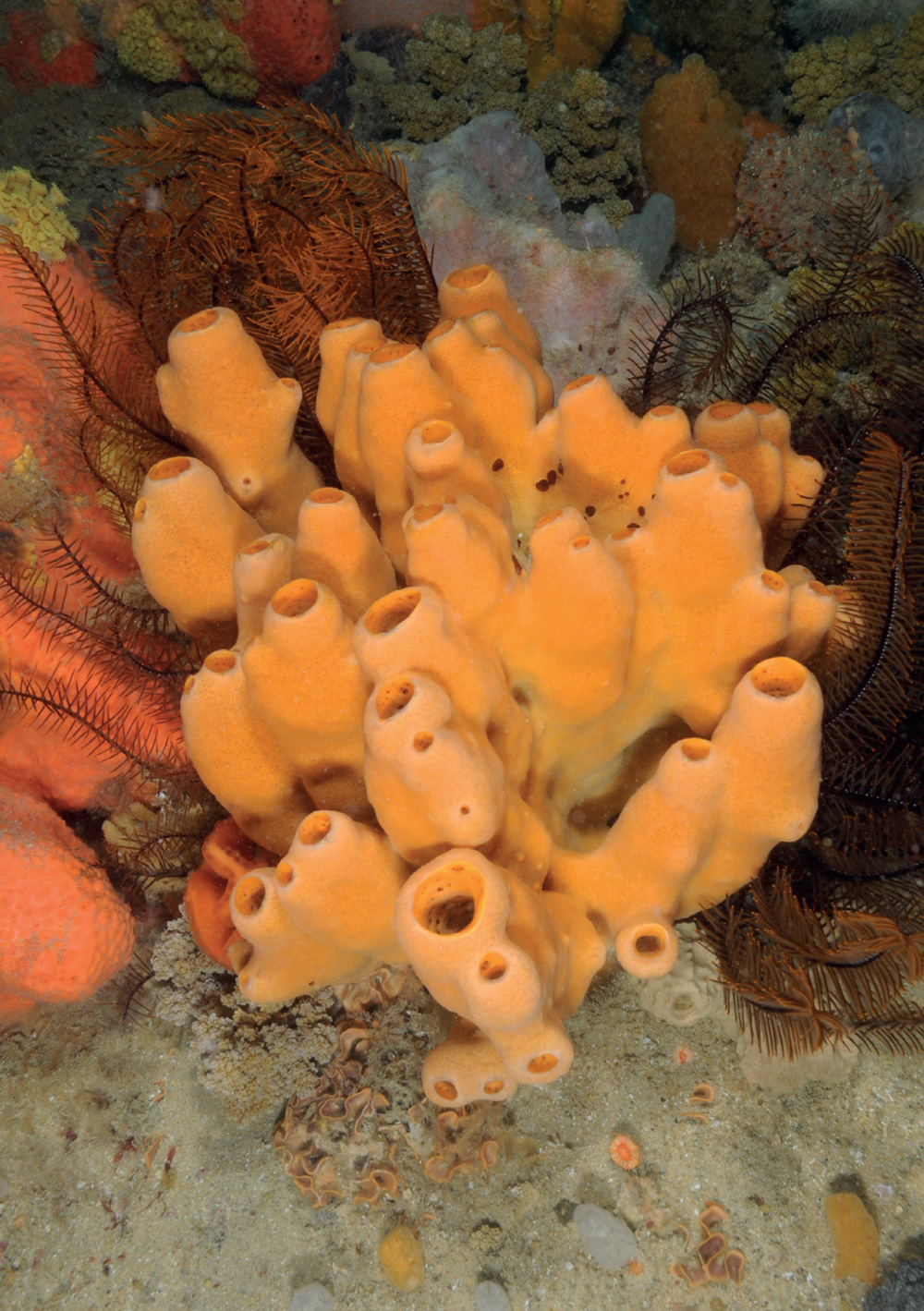Goudie Lisa - Sponges
Here you can read online Goudie Lisa - Sponges full text of the book (entire story) in english for free. Download pdf and epub, get meaning, cover and reviews about this ebook. year: 2013, publisher: Museum Victoria, genre: Children. Description of the work, (preface) as well as reviews are available. Best literature library LitArk.com created for fans of good reading and offers a wide selection of genres:
Romance novel
Science fiction
Adventure
Detective
Science
History
Home and family
Prose
Art
Politics
Computer
Non-fiction
Religion
Business
Children
Humor
Choose a favorite category and find really read worthwhile books. Enjoy immersion in the world of imagination, feel the emotions of the characters or learn something new for yourself, make an fascinating discovery.
- Book:Sponges
- Author:
- Publisher:Museum Victoria
- Genre:
- Year:2013
- Rating:3 / 5
- Favourites:Add to favourites
- Your mark:
- 60
- 1
- 2
- 3
- 4
- 5
Sponges: summary, description and annotation
We offer to read an annotation, description, summary or preface (depends on what the author of the book "Sponges" wrote himself). If you haven't found the necessary information about the book — write in the comments, we will try to find it.
Sponges — read online for free the complete book (whole text) full work
Below is the text of the book, divided by pages. System saving the place of the last page read, allows you to conveniently read the book "Sponges" online for free, without having to search again every time where you left off. Put a bookmark, and you can go to the page where you finished reading at any time.
Font size:
Interval:
Bookmark:

Tedanya (Tedanya) anhelans, from Portsea Pier, Port Phillip Bay.
Julian Finn

A Museum Victoria
Field Guide to Marine Life
Sponges
Lisa Goudie
Mark Norman
Julian Finn

Published by
Museum Victoria 2013
Text copyright
Museum Victoria
Images copyright Museum
Victoria unless otherwise noted.
Museum Victoria has made every
effort to obtain copyright and
moral permission for use of all
images. Please advise us of any
errors or omissions.
Museum Victoria
Publishing
GPO Box 666
Melbourne Vic 3001 Australia
Tel + 61 3 8341 7370 or 8341 7536
Museum Victoria
www.museumvictoria.com.au
Dr J. Patrick Greene
CHIEF EXECUTIVE OFFICER
Dr Robin Hirst
DIRECTOR, COLLECTIONS,
RESEARCH AND EXHIBITIONS
Dr Mark Norman
HEAD, SCIENCES
Series editors
Mark D. Norman
Melanie Mackenzie
Other titles in the series
An introduction to marine life
Barnacles
Crabs, hermit crabs and allies
Shrimps, prawns and lobsters
PRINTED BY
BPA Print Group
ORIGINAL DESIGN BY
Propellant
TYPESET BY
the printers drawers
National Library of Australia
Cataloguing-in-Publication entry
Goudie, Lisa.
Sponges / Lisa Goudie, Mark D.
Norman and Julian Finn.
Includes bibliographical
references and index.
Sponges--Australia,
Southeastern.
Other Authors/Contributors:
Norman, Mark Douglas.
Finn, Julian.
Museum Victoria.
ISBN: 9780980381399 (pbk.)
9781921833151 (e-pub)
9781921833182 (e-pdf)
593.40994
The content of this publication
is provided for information
purposes only and is not intended
as a substitute for professional
advice. Museum Victoria does not
accept liability for any damage,
loss, injury of death to any person
in relation to the information
or advice (or the use of such
information or advice) which is
provided in this publication.
FRONT COVER IMAGE
Sycon sp.
Photographer: Mark Norman
IMAGES ON BACK COVER
Dactylia sp. LG1
Speciospongia purpurea
Echinoclathria sp. LG1
Photographer: Mark Norman
Funding for the Museum Victoria
Field Guides to Marine Life is
gratefully acknowledged from the
Australian Government through
a grant from its Natural Heritage
Trust. The grant was facilitated by
the Port Phillip and Westernport
Catchment Management
Authority. Publication of the
series is funded in part by the
Victorian Coastal Council and
Parks Victoria.

MUSEUM VICTORIA
FIELD GUIDES
TO MARINE LIFE
These field guides to marine life enable the amateur naturalist, beachcomber or environmental scientist to identify the marine animals most commonly found on the shore or in shallow waters along the coast of the state of Victoria, Australia. South-eastern Australia is characterised by a rich marine fauna, with many species found nowhere else. Commonly, species found along the Victorian coast also occur in Tasmania, southern New South Wales, and along the southern coast of the continent, through South Australia, into southern Western Australia.
This series aims to cover the common marine animals, and each book deals with a different group. More species live on the Victorian shore and in its shallow waters than are included in each book, and many more inhabit the deeper waters of Bass Strait and beyond. See Further Information at the end of this guide, and Museum Victorias website: museumvictoria.com.au .
Museum Victoria encourages individuals to explore the diversity of coastal habitats, but discourages unnecessary removal of specimens from their natural environment. Museum scientists are interested in new discoveries, and unusual findings can be reported to the Discovery Centre at Museum Victoria, or to Reef Watch Victoria: .

Reef Watch Victoria is a community-based marine monitoring program for Victoria's temperate marine environment. Divers and snorkellers conduct regular surveys at their favourite Victorian reef sites using the Reef Watch monitoring kit. For more information, go to: www.reefwatchvic.asn.au .
The Marine Research Group (MRG) is a branch of the Field Naturalists Club of Victoria which has had a long and productive working relationship with Museum Victoria, actively undertaking research into Victorias rich marine life, and providing curatorial and survey assistance with Museum Victorias extensive marine invertebrate collection. The MRG meets regularly, welcomes new members, and can be contacted at: www.fncv.org.au .
A large proportion of the images and information presented in this guide has resulted from the Under the Lens partnership between Museum Victoria and Parks Victoria. Along with ports and harbours, Parks Victoria manages marine national parks and sanctuaries throughout Victoria. For more information, go to: parkweb.vic.gov.au .

CONTENTS

Chondropsis cf kirki.
Mark Norman

What are sponges?
Most people think of sponges as something they use in the kitchen or bathroom. Although now more commonly made of synthetic foam, these household objects were historically made up of the skeletal remains of once-living true sponges. The term sponge means to squeeze but not all sponges are spongy. In fact they can be soft and slimy, fibrous, prickly, sandy and crumbly, or as tough as old boots.
Bathroom sponge.
Lisa Goudie
Sponges are one of the oldest and simplest life forms on earth. Until the 18th century they were classified as zoophytes (plant-animals). However, sponges are animals belonging to a group known as the Phylum Porifera, or literally, pore-bearers. Sponges are simple, multicellular organisms made up of different cell types, each with a different function. Unlike all other animals, however, the cells of sponges are not arranged or grouped to form tissues or organs. Sponges are not colonies of individual animals but rather collections of individual cells, one type of which forms a continuous outer, skin-like layer. The vast majority of sponges are filter feeders attached to the sea floor, drawing seawater through their bodies and with it the food and oxygen they need to survive. In doing so, they provide an important link between the water mass and the seafloor. Sponges are united as a group of animals by the possession of a unique cell type the or collar cell (see Sponge internal structure ). Choanocytes each have a central flagellum, or filament, that beats
Font size:
Interval:
Bookmark:
Similar books «Sponges»
Look at similar books to Sponges. We have selected literature similar in name and meaning in the hope of providing readers with more options to find new, interesting, not yet read works.
Discussion, reviews of the book Sponges and just readers' own opinions. Leave your comments, write what you think about the work, its meaning or the main characters. Specify what exactly you liked and what you didn't like, and why you think so.










